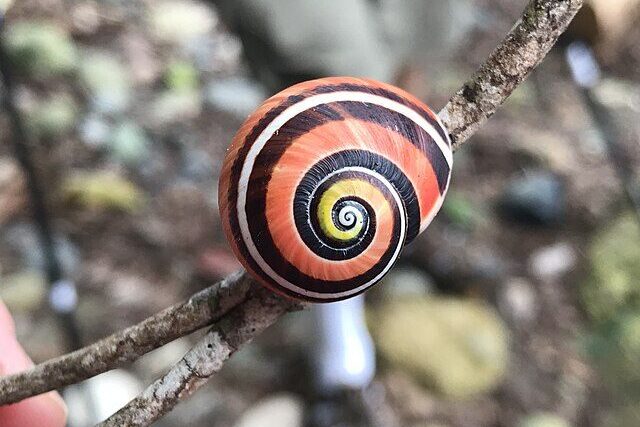
Scientists have launched a mission to save what many consider the world’s most beautiful snails – and to unlock the secrets of their biology.
Polymita tree snails, native to eastern Cuba, are famed for their dazzlingly colourful, patterned shells. But those same shells have made them highly sought-after by collectors, pushing the species towards extinction.
Cuban biologists have now joined forces with researchers at the University of Nottingham to protect all six known species of Polymita.
The most endangered is Polymita sulphurosa – lime green with blue flame markings and vivid orange and yellow bands.
But all the Polymita species are strikingly bright and colourful, which is an evolutionary mystery in itself.
“One of the reasons I’m interested in these snails is because they’re so beautiful,” explained evolutionary geneticist and mollusc expert Prof Angus Davison from the University of Nottingham.
The irony, he said, is that this is the reason the snails are so threatened.
“Their beauty attracts people who collect and trade shells. So the very thing that makes them different and interesting to me as a scientist is, unfortunately, what’s endangering them as well.”
Searches online reveal Polymita shells for sale, including a UK listing offering seven shells for £160.
“For some of these species, we know they’re really quite endangered. So it wouldn’t take much [if] someone collects them in Cuba and trades them, to cause some species to go extinct.”
Though the snails are protected under the Convention on International Trade in Endangered Species, enforcement is weak. It is illegal to remove them or their shells from Cuba without a permit – but legal to sell them once they’re abroad.
With climate change and deforestation already damaging their forest habitats, Prof Davison warns that shell collecting could push fragile populations to extinction.
He is now working closely with Prof Bernardo Reyes-Tur, a conservation biologist at the Universidad de Oriente in Santiago de Cuba. Reyes-Tur is breeding Polymita snails in captivity – even keeping them in his own home, despite unreliable power supplies and tropical heat.
“They have not bred yet, but they’re doing well,” he told us on a video call.
“It’s challenging though – we have blackouts all the time.”
Meanwhile, Davison’s team in Nottingham is carrying out genetic research, preserving snail tissue in cryogenic freezers to study their genomes. By decoding their DNA, scientists hope to confirm how many species exist, how they are related, and what drives their extraordinary shell patterns.
The goal is to secure both the survival of these dazzling snails and an understanding of their unique biology – before they are traded into extinction.
“Eastern Cuba is the the only place in the world where these snails are found,” Prof Davison told BBC News.
“That’s where the expertise is – where the people who know these snails, love them and understand them, live and work.
“We hope we can use the genetic information that we can bring to contribute to their conservation.”
——————————————————————————
At Natural World Fund, we are passionate about restoring habitats in the UK to halt the decline in our wildlife.

